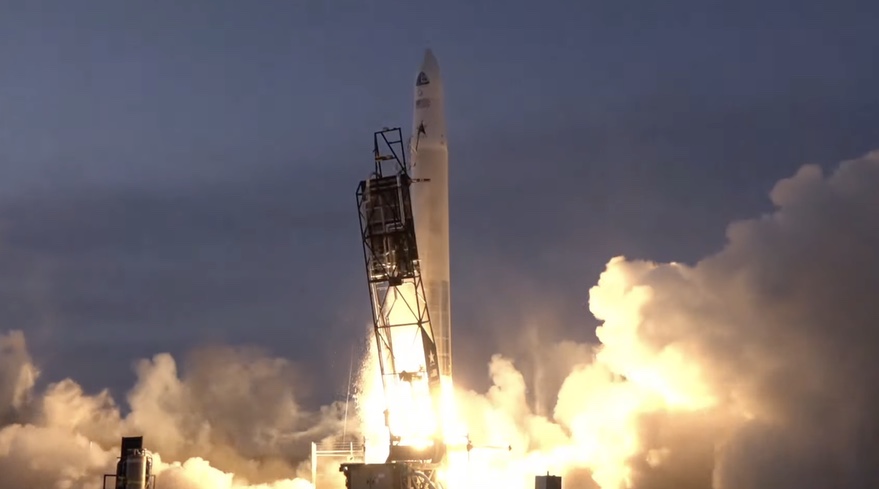
Astra’s Rocket 3.3 returns to flight with successful launch (Image Credit: Space News)
Updated 6:45 p.m. Eastern with stock information.
WASHINGTON — Astra successfully returned its Rocket 3.3 vehicle to flight March 15, placing several payloads into low Earth orbit.
The Rocket 3.3 vehicle, designated LV0009 by Astra, lifted off at 12:22 p.m. Eastern from Pacific Spaceport Complex – Alaska on Kodiak Island. The company scrubbed a launch attempt the previous day because of poor weather.
The liftoff and ascent appeared to go as expected. That included the successful separation of the payload fairing after the first stage engines shut down and before separation of the second stage. On the previous Astra launch Feb. 10, a flawed design in the wiring for the payload fairing separation system prevented one mechanism from firing, keeping the fairing from separating as planned.
The second stage engine shut down about eight minutes and 35 seconds after liftoff. Payload separation was scheduled to take place 10 seconds later, but there was no immediate confirmation that the payloads were released.
A little more than an hour after liftoff, though, Astra Chief Executive Chris Kemp said the payloads were communicating with ground stations, confirming successful separation. “The flight was nominal,” he said on a company webcast. “We were able to precisely deliver to the targeted orbit and inclination at orbital velocity.” Astra said before the launch the vehicle would deliver the payloads to a sun-synchronous orbit at an altitude of 525 kilometers.
The mission, the first in a multilaunch agreement Astra announced with launch services provider Spaceflight March 14, carried payloads for three customers. One payload, called EyeStar-S4 and developed by NearSpace Launch, was designed to remain attached to the second stage to test intersatellite communications technologies the company plans to use on future satellites.
A second payload was OreSat0, a cubesat developed by a student group, the Portland State Aerospace Society. Spaceflight previously planned to launch OreSat0 on one of its Sherpa tugs manifested on the SpaceX Transporter-3 rideshare mission in January, but a propellant leak on the Sherpa forced the company to remove the vehicle from that launch and find other rides for OreSat0 and the other satellites it was to deploy. A third customer, not identified by either Astra or Spaceflight, also had one or more payloads on board.
The launch was the first since the February launch failure from Cape Canaveral that carried four NASA and university cubesats on a launch arranged by NASA’s Venture Class Launch Services program. The subsequent investigation turned up both the payload fairing wiring problem as well as a software glitch with the thrust vector control system on the second stage.
“The team worked really hard — every day, every weekend, many nights — to quickly identify the issues that we had on the flight, get another rocket back up to Kodiak, and fly it,” Kemp said on the webcast.
Kemp previously said that the next three launches Astra has planned will take place from Florida, carrying cubesats for NASA’s Time-Resolved Observations of Precipitation structure and storm Intensity with a Constellation of Smallsats (TROPICS) Earth science mission. Those launches are scheduled for this spring.
Despite the successful launch, Astra was not rewarded on the stock market. Shares in Astra were volatile in trading March 13, soaring briefly after liftoff only to sharply plummet during the nearly one hour with no updates regarding payload separation. The stock rebounded when Kemp announced successful payload deployment, but shared closed for the day down nearly 0.6% at $3.49.
Edison Yu, a research analyst at Deutsche Bank, said in a note after the launch that the success of this mission alone was not sufficient. “We think this will help sentiment on the stock but the company likely needs to put together a string of successful launches for a meaningful re-rating,” he wrote.
Astra will release its fourth quarter and full year 2021 financial results after the markets close March 17.








